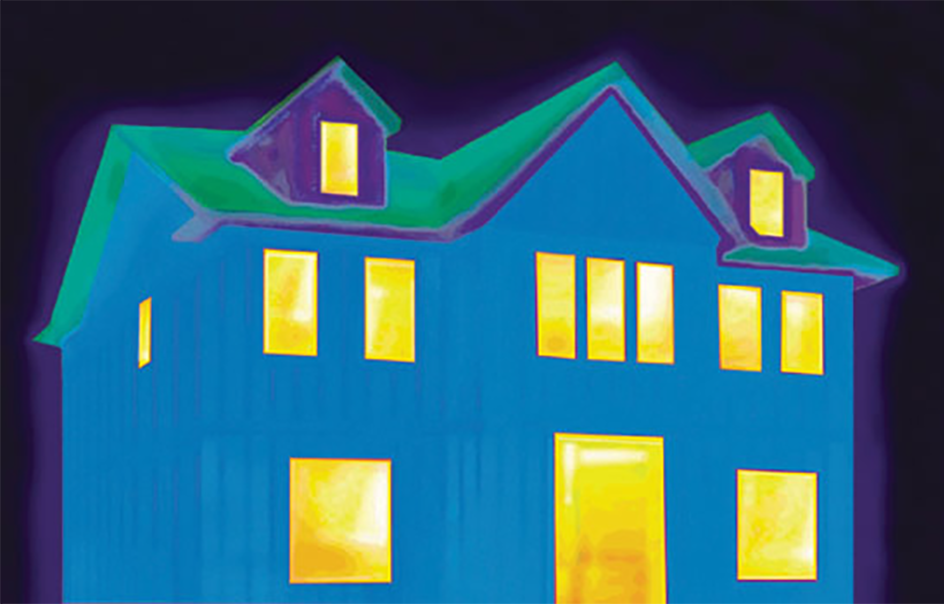A building’s indoor environment can shape the actions, health, and productivity of its occupants. Considering that the average person spends 90% of their time indoors, this puts a high emphasis on ensuring indoor spaces are healthy environments for all occupants. That is why builders and owners are faced with the important task to improve indoor air quality, temperatures, lighting, and acoustics.
How do you define a “healthy building?” What does having one – or building one – really mean?
It starts with selecting building materials that prioritize the health and comfort of those inside. With materials such as structural continuous insulation, building owners can guarantee a seamless thermal barrier, reducing heat transfer, minimizing the risk of a sick building, and improving energy efficiency.
Thermal Efficiency and Weather Barrier
Continuous insulation minimizes thermal bridging, which occurs when heat is transferred through building materials, such as the studs. However, when installed continuously and properly, continuous insulation contributes to the overall tightness of a building envelope from a thermal perspective. This results in more consistent indoor temperatures, reducing heat loss in the winter and minimizing heat gain in the summer.
This helps maintain consistent indoor temperatures, reducing the need for excessive reliance on the HVAC system. A stable indoor temperature not only improves comfort but also prevents the growth of mold and mildew, which thrive in environments with fluctuating temperatures that lead to condensation.
Systems such as OX-IS structural insulated sheathing have benefits beyond just enhancing thermal efficiency. The integrated structural continuous insulation is a 4-in-1 product that includes structural sheathing, continuous insulation, an air barrier, and a water-resistant barrier. The system is designed to boost performance of the building envelope and protect it from water intrusion.
Ultimately, materials such as OX-IS help meet today’s most stringent energy efficiency codes while simultaneously eliminating the need for additional materials, driving down overall construction project costs.

Crucial Moisture Control
Thermal bridging can create cold spots where condensation forms, leading to moisture-related problems. By minimizing or eliminating thermal bridging, continuous insulation significantly reduces the likelihood of condensation and moisture build up within the wall assembly.
Continuous insulation provides a uniform barrier that reduces temperature differences across the building envelope, which helps to prevent the conditions that cause condensation. OX-IS also eliminates the risks posed by moisture via the material’s built-in air and water barrier. Ultimately, by controlling moisture levels, integrated continuous insulation materials maintain the structural integrity of the building and creates benefits for the indoor environment.
In addition, structural continuous insulation systems can be seamlessly integrated with other building components, such as flashings and drainage planes. This integration is crucial for promoting proper drainage and ensuring that moisture does not penetrate into the wall cavity. By directing water away from the building envelope and preventing it from entering the interior, these systems play a vital role in maintaining the longevity and performance of the structure.
The Ideal Indoor Air Quality
In addition to providing thermal and moisture control, integrated structural continuous insulation materials significantly enhance the airtightness of a building envelope. By creating a barrier against air infiltration, the material minimizes the entry of outdoor pollutants such as dust, pollen, mold spores, and other airborne irritants. This airtight seal improves indoor air quality by reducing the presence of these contaminants and enhances the efficiency of the HVAC system.
With fewer drafts and less likelihood of uncontrolled air leaks, the HVAC system can maintain consistent indoor temperatures more effectively and with less energy, leading to a healthier indoor environment. By limiting the infiltration of external pollutants, continuous insulation helps to create a cleaner, more comfortable indoor space, reducing the risk of allergies and respiratory issues for occupants.
Healthier, More Sustainable Spaces
Designing healthy indoor environments is a necessity for the well-being and comfort of occupants. Integrated structural continuous insulation plays a critical role in achieving this through enhanced thermal efficiency, moisture control, and improved air quality.
By embracing high-performance materials such as structural insulated sheathing, building owners can meet stringent energy codes, reduce costs, and most importantly, foster healthier, more sustainable indoor spaces that enhance the quality of life for everyone inside.

